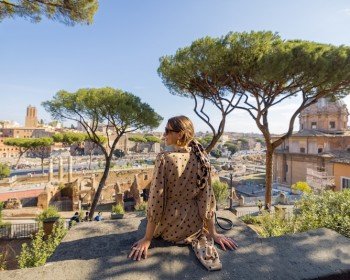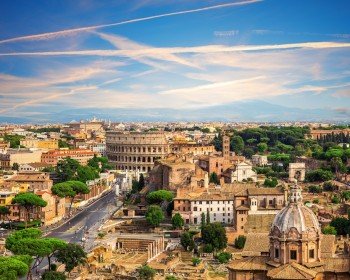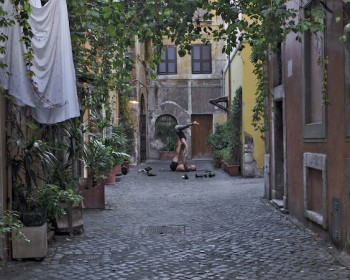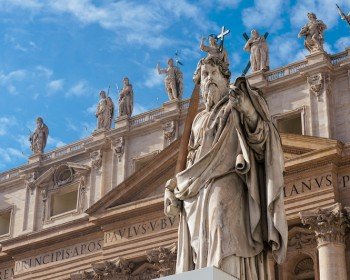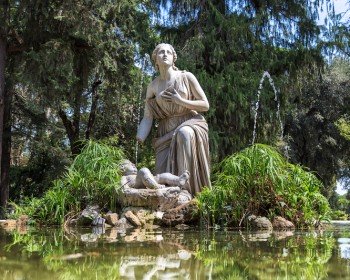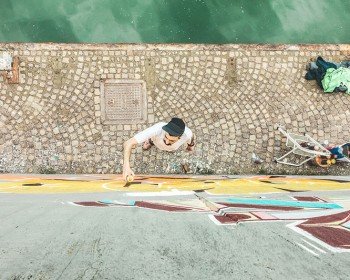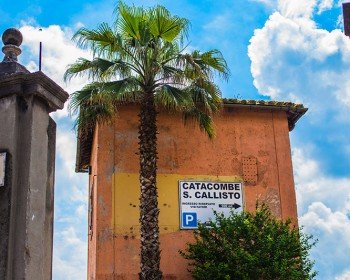Tivoli, known as the "Tibur Superbum" as Virgil called it, has an origin and a history that make it an even older city than Rome itself. Born around in 1215 b.C. ancient Tivoli, was considered the meeting point for many different populations, but nowadays it is mostly known for Villa d'Este, Hadrian's Villa and Villa Gregoriana. Considered the highest level of the ancient beauty in Tivoli, Villa d'Este and Hadrian's Villa was listed in the UNESCO World Heritage Sites, while Villa Gregoriana is managed by the FAI (Fondo Ambiente Italiano) the National Trust of Italy.
Poets, painters and rich aristocrats had chosen Tivoli since the 18th century thanks to its exclusive panoramas that allow people to have a trip between archeology, history, places of worship and spectacles of nature.
If you are in Rome and you have some time left, you should not miss a day to Tivoli at all, not just for the Villas I am going to talk about, but for the city itself and for the panoramas you can appreciate.
-
Villa d'Este
One of the symbols of the Italian Renaissance, the period that goes from the end of the Middle Age to the beginning of the Early Modern Period (14th - 17th centuries), it is absolutely an architectural gem.
Its construction was ordered by the Cardinal Ippolito II d'Este, governor of Tivoli and son of Lucrezia Borgia, a controversial Italian noblewoman, and works lasted almost 20 years because of innumerable problems that showed up midway.
The water gushing from the fountains -and that you can still admire at its best! - comes directly from the Aniene river through an underground drain 6oo meters long. The whole complex extends on a wide area including not only the residential palace, but a garden adorned with paths, trees and hedges, and lots of fountains, true artworks. The D'Este palace is characterized by an elegant façade and inside it extends over three floors, each of which is made up by different extraordinary rooms as the Superior Apartment and the Inferior one, where you can admire some marvellous frescoes.
Most fountains, located outside, can be considered theater due to the fact that is always a splendid show.
The "Rometta" fountain, for example, is the miniature of ancient Rome because it represents the water of the Tiber River emerging in the Tiburtini Mountains (the name of the mountain slope near which the city raised up), symbolised by the "Oval Fountain", located near the Rometta itself. Being one of the first fountains in the garden it is one of the most popular too. An artificial mountain rises above the fountain standing exactly for the Tiburtine landscape. The Oval Fountain has its own grotto too, the Grotto of Venus which served as a meeting point for guests on summer days. Between these two fountains, you can find the hundreds of Fountains, another celebrated marvel of the Gardens. Like every other fountain, they represented the aqueducts roman built to supply water to Rome.
The worth of interest the so-called "musical fountains" as well, spreading music all around the gardens.
Last but not least, the "Fontana del Bicchierone" (Fountain of the Cup) designed by Bernini, it is known as the "Lily Fountain" too and was integrated into the Villa almost a century after its fulfillment. The total effect is that of a poetic and harmonious water feature and with the passing of the time it became a link between the architecture of the palace and the garden.
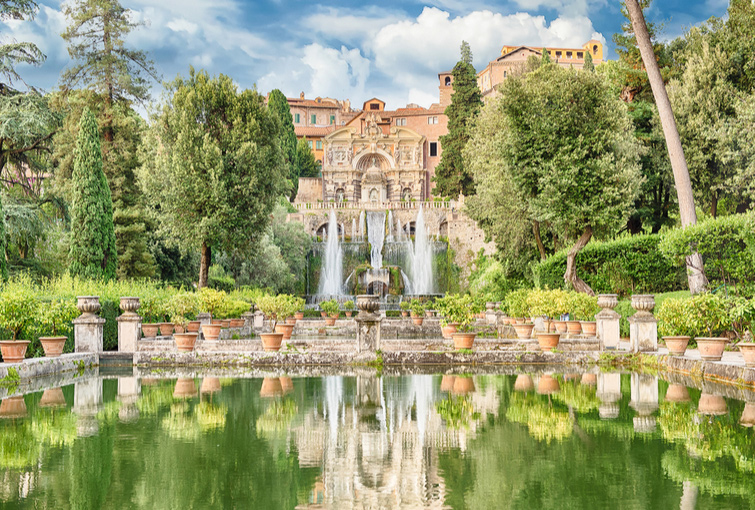
Would you visit Tivoli? Enjoy our Tivoli Villas Day Trip from Rome
-
Hadrian's Villa
It is the proof of the greatness of the ancient Roman Empire, still enduring. Built between 118 a.D. and 138 a.D. it was commissioned by Emperor Hadrian and built at the bottom of Tiburtini mountains. It is commonly believed that he wanted to reproduce in his residence every place and every monument he had been fascinated by during his innumerable travels: there were, in fact, temples, palaces, theatres, gardens, fountains and thermal baths. The building was developed in two different levels, the upper one welcoming and quieter, and the lower one for slaves, dynamic and noisy.
Nowadays you can just admire a little part of the original villa, but still enough to testify to the power of this complex.
Some of the rooms were built on Hadrian's request and stand for the numerous territories conquered by the Roman Empire and visited by Hadrian himself.
One of the most famous monuments in Villa Hadriana is "Teatro Marittimo", a symbol of the innovative architecture characterizing the whole residential complex. The name comes from a marble sculpture with a marine subject that embellished it and "Teatro Marittimo" itself can be considered a Domus, that is to say a minor residence in the imperial one.
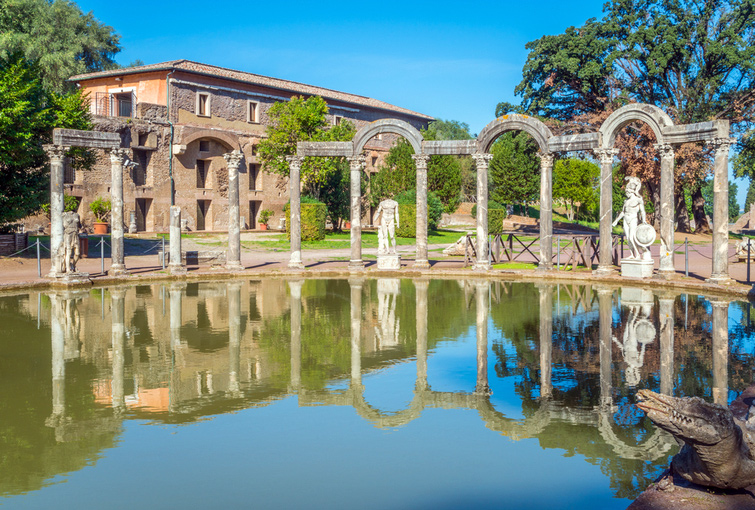
-
Villa Gregoriana
It is a succession of gardens, paths, woods, caves and flora which extends at the bottom of the classical acropolis, near Rome. Ordered by Pope Gregory XVI around 1834, this unpolluted place is considered unique in the world; there, nature and human work fuse together among extraordinary landscapes and ruins of the ancient archeological villa.
Villa Gregoriana is famous all around the world both for the "Grande Cascata" - the big waterfall- a scenographic jet of water pushed out by the Aniene river, and the "Grotte di Nettuno" -Neptune Cave- and the "Grotte delle Sirene" - Sirens Caves - where you can get passing through a tree-lined path embellished with different varieties of plants.
Furthermore, there is a bridge, the Ponte Gregoriano, which links the park to the old town of Tivoli: from above the bridge you can appreciate a fantastic panorama of Aniene valley and the ancient acropolis. Undoubtedly reading about these three villas is totally different than visiting them, but here my only goal was to rouse your interest just a little, and I hope I fulfilled it!
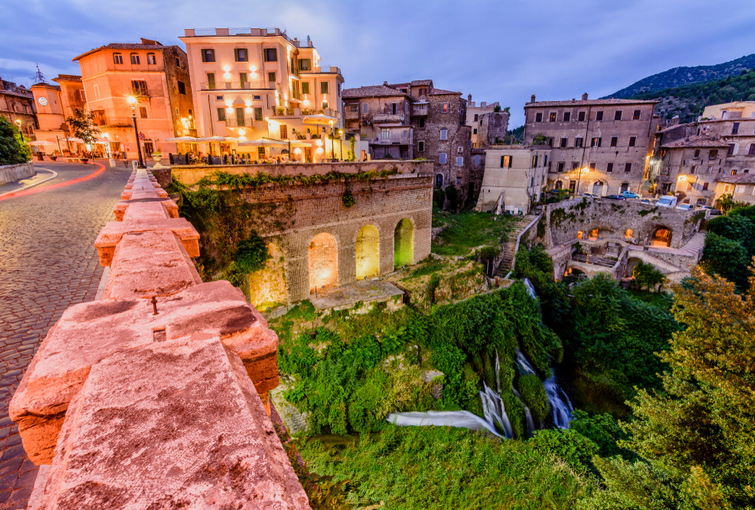
After visiting the Villas why don't you enjoy a walk through the city too? You can appreciate influences from the different art style, like the gothic style, the Renaissance, the Romanesque and in the central square you can be pleased by the colorful fruits, vegetables and flowers sold in the market.
And don't worry about being bored by the history, Tivoli has so many intriguing and curious aspects that you will totally be satisfied by your day out of Rome!


